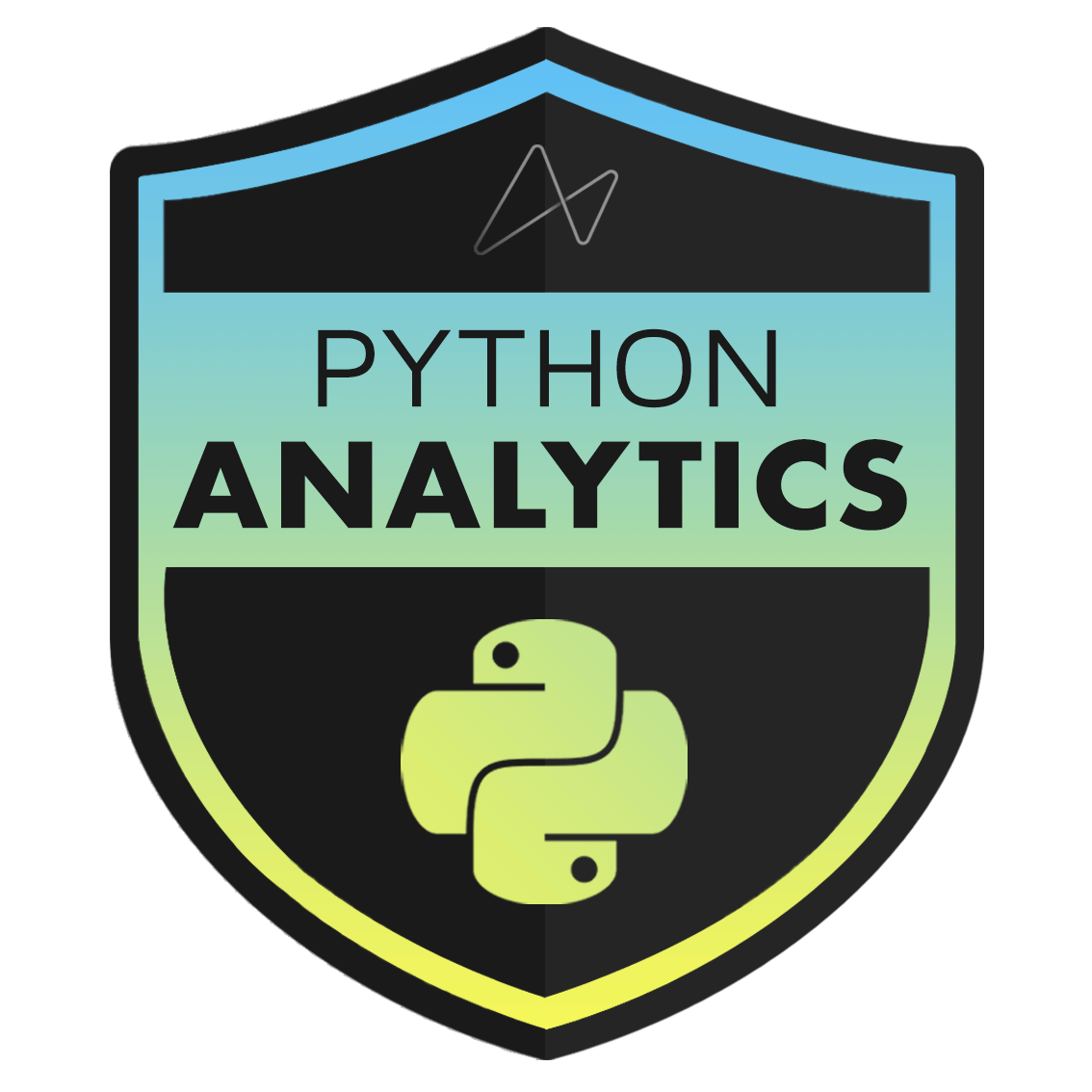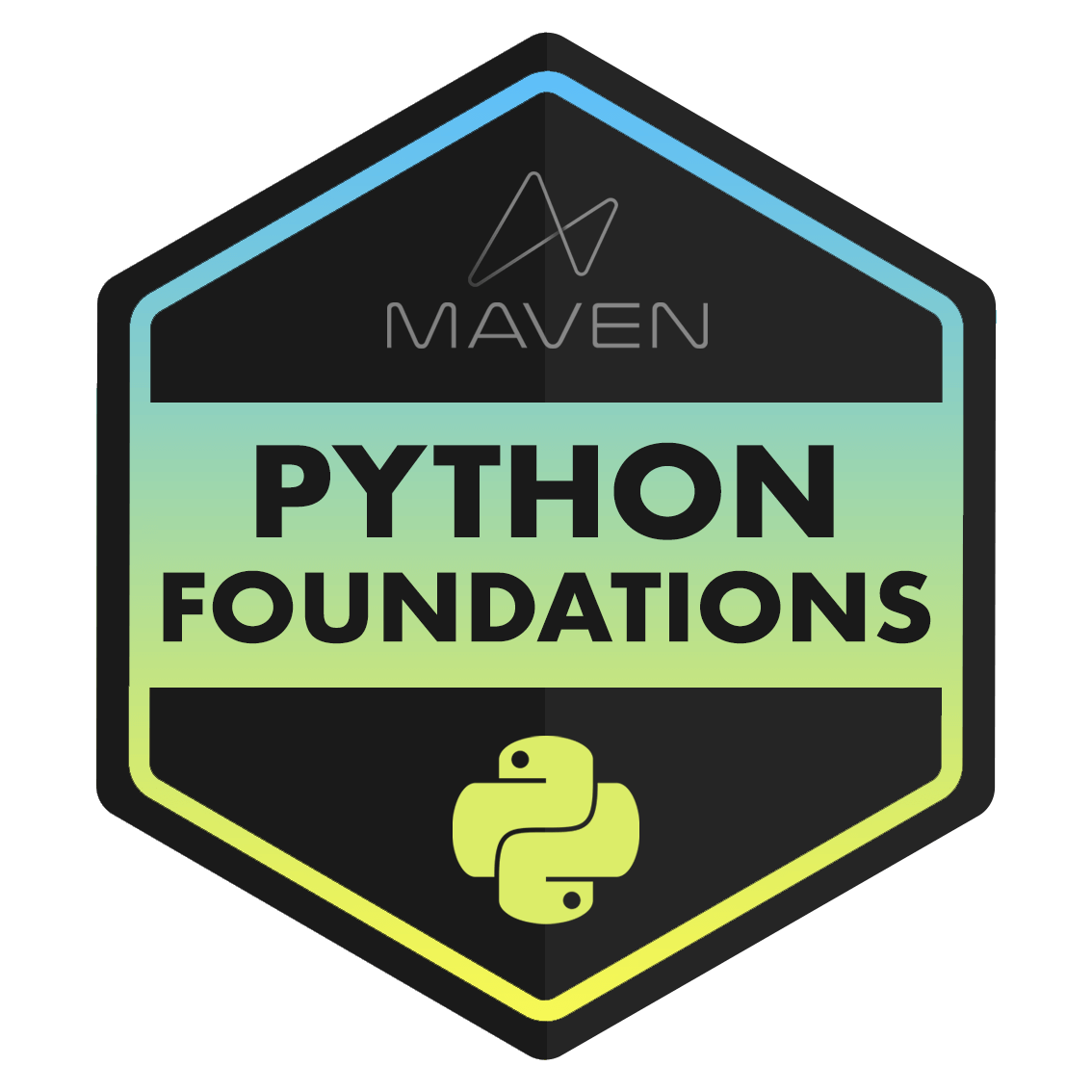Expires in:
Expires in:
Expires in:



LEARNING PATH
Python for Data Analytics
Python for Data Analytics
This path is for BI Analysts or Data Scientists looking to master Python's most powerful tools for data analysis and visualization, including Pandas, Matplotlib, Seaborn, Plotly and Dash.
70 hours
4 courses
3 projects
Python
Overview
This path is for BI analysts or data scientists looking to build job-ready Python skills and master the most popular libraries for data analysis and visualization.
We'll start by mastering the core building blocks of Python for analytics, including data types, properties, and foundational tools like variables, numeric and string operators, conditional logic, loops and functions.
Next we'll dive into NumPy & Pandas, two of the most popular Python packages for data analysis. We'll introduce arrays and array properties, common operations like indexing, slicing, filtering and sorting, and powerful methods for exploring, analyzing, aggregating and transforming dataframes.
From there we'll explore data visualization methods using Matplotlib & Seaborn. We'll introduce data visualization frameworks and best practices, review tools and techniques for building and customizing basic charts, then explore advanced formatting options and custom visuals.
Last but not least we'll use Plotly & Dash to build and deploy interactive visuals, dashboards, and web applications.
This path is designed to help you learn job-ready skills, solve real business problems, and build a project portfolio to showcase your skills to peers and employers.
WHO SHOULD TAKE THIS PATH?
Data Analysts or BI professionals looking to build expert-level Python skills
Aspiring data scientists who want to learn Python for data analysis and visualization
Students looking for a hands-on, project-based learning experience
WHAT ARE THE PATH REQUIREMENTS?
Jupyter Notebooks (free download, we'll walk through the install)
No advance preparation is required (basic familiarity with programming is a plus, but not a prerequisite)
Overview
This path is for BI analysts or data scientists looking to build job-ready Python skills and master the most popular libraries for data analysis and visualization.
We'll start by mastering the core building blocks of Python for analytics, including data types, properties, and foundational tools like variables, numeric and string operators, conditional logic, loops and functions.
Next we'll dive into NumPy & Pandas, two of the most popular Python packages for data analysis. We'll introduce arrays and array properties, common operations like indexing, slicing, filtering and sorting, and powerful methods for exploring, analyzing, aggregating and transforming dataframes.
From there we'll explore data visualization methods using Matplotlib & Seaborn. We'll introduce data visualization frameworks and best practices, review tools and techniques for building and customizing basic charts, then explore advanced formatting options and custom visuals.
Last but not least we'll use Plotly & Dash to build and deploy interactive visuals, dashboards, and web applications.
This path is designed to help you learn job-ready skills, solve real business problems, and build a project portfolio to showcase your skills to peers and employers.
WHO SHOULD TAKE THIS PATH?
Data Analysts or BI professionals looking to build expert-level Python skills
Aspiring data scientists who want to learn Python for data analysis and visualization
Students looking for a hands-on, project-based learning experience
WHAT ARE THE PATH REQUIREMENTS?
Jupyter Notebooks (free download, we'll walk through the install)
No advance preparation is required (basic familiarity with programming is a plus, but not a prerequisite)
Overview
This path is for BI analysts or data scientists looking to build job-ready Python skills and master the most popular libraries for data analysis and visualization.
We'll start by mastering the core building blocks of Python for analytics, including data types, properties, and foundational tools like variables, numeric and string operators, conditional logic, loops and functions.
Next we'll dive into NumPy & Pandas, two of the most popular Python packages for data analysis. We'll introduce arrays and array properties, common operations like indexing, slicing, filtering and sorting, and powerful methods for exploring, analyzing, aggregating and transforming dataframes.
From there we'll explore data visualization methods using Matplotlib & Seaborn. We'll introduce data visualization frameworks and best practices, review tools and techniques for building and customizing basic charts, then explore advanced formatting options and custom visuals.
Last but not least we'll use Plotly & Dash to build and deploy interactive visuals, dashboards, and web applications.
This path is designed to help you learn job-ready skills, solve real business problems, and build a project portfolio to showcase your skills to peers and employers.
WHO SHOULD TAKE THIS PATH?
Data Analysts or BI professionals looking to build expert-level Python skills
Aspiring data scientists who want to learn Python for data analysis and visualization
Students looking for a hands-on, project-based learning experience
WHAT ARE THE PATH REQUIREMENTS?
Jupyter Notebooks (free download, we'll walk through the install)
No advance preparation is required (basic familiarity with programming is a plus, but not a prerequisite)
Meet your instructors

Chris Bruehl
Analytics Engineer & Lead Python Instructor
Chris is a Python expert, certified Statistical Business Analyst, and seasoned Data Scientist, having held senior-level roles at large insurance firms and financial service companies. He earned a Masters in Analytics at NC State's Institute for Advanced Analytics, where he founded the IAA Python Programming club.
Curriculum

Python Foundations for Data Analysis
Master the core building blocks of Python for data analysis, including data types, variables, conditional logic, loops, functions and more

Data Analysis with Python & Pandas
Master the basics of NumPy and Pandas for data analysis, and learn how to explore, transform, aggregate, join and visualize dataframes

Data Visualization with Matplotlib & Seaborn
Learn how to build custom visuals and reports using Python's most popular data visualization libraries: Matplotlib & Seaborn

Interactive Dashboards with Plotly & Dash
Create interactive visuals, dashboards and web applications using Python's Plotly & Dash libraries

Python Foundations for Data Analysis
Master the core building blocks of Python for data analysis, including data types, variables, conditional logic, loops, functions and more

Data Analysis with Python & Pandas
Master the basics of NumPy and Pandas for data analysis, and learn how to explore, transform, aggregate, join and visualize dataframes

Data Visualization with Matplotlib & Seaborn
Learn how to build custom visuals and reports using Python's most popular data visualization libraries: Matplotlib & Seaborn

Interactive Dashboards with Plotly & Dash
Create interactive visuals, dashboards and web applications using Python's Plotly & Dash libraries

Python Foundations for Data Analysis
Master the core building blocks of Python for data analysis, including data types, variables, conditional logic, loops, functions and more

Data Analysis with Python & Pandas
Master the basics of NumPy and Pandas for data analysis, and learn how to explore, transform, aggregate, join and visualize dataframes

Data Visualization with Matplotlib & Seaborn
Learn how to build custom visuals and reports using Python's most popular data visualization libraries: Matplotlib & Seaborn

Interactive Dashboards with Plotly & Dash
Create interactive visuals, dashboards and web applications using Python's Plotly & Dash libraries
Meet your instructors

Chris Bruehl
Analytics Engineer & Lead Python Instructor
Chris is a Python expert, certified Statistical Business Analyst, and seasoned Data Scientist, having held senior-level roles at large insurance firms and financial service companies. He earned a Masters in Analytics at NC State's Institute for Advanced Analytics, where he founded the IAA Python Programming club.



